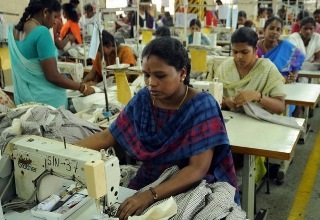Furniture, electricals, apparel, vehicles among top job creators, says RBI
Updated: Jun 25, 2014 01:55:57pm

For every 10 per cent change in real GDP, there is about 1.8-2 per cent change in employment, the paper on employment elasticity noted.
“While agriculture has witnessed negative elasticity, services including construction have generally been employment intensive. Within manufacturing, the employment elasticity for organized manufacturing sector based on various estimates seems to be higher…. for 2000s and it has risen over the previous two decades. Given the huge productivity and wage differentials between organised and unorganised sectors, greater employment generation in organised manufacturing is crucial as it has larger multiplier effects,” the paper said.
Employment elasticity is a measure of the percentage change in employment associated with a 1 percentage point change in economic growth.
It said it is the relative cost of capital vis-à-vis labour and the nature of investment demand that will determine to what extent growth would be job-creating. Increased capital to labour ratio in the organised sector for a labour abundant country like India is a concern that has been well-highlighted. “If India has to meet the demographic dividend challenge, focus should be on industries where employment elasticity is higher.”
On a rough basis, about 10 million people would need a job every year for the next 15 years Finding productive jobs for such huge numbers is a big challenge, and clearly the answer lies in stepping up growth, and importantly, stepping up the employment intensity of growth. Also, these additional jobs will have to be created keeping in mind the overall structural changes that Indian labour market has been going through, particularly in terms of movement of people away from agriculture and reduction in women labour force as they move towards education.
The non-farm sector has to gear up to shoulder the burden of agriculture. Amongst the non-farm sector, while the services sector has led India’s growth and employment story for some time now, it is the manufacturing sector, particularly the organised manufacturing that has to play a more important role in creating jobs in the coming times. (KNN Bureau)











